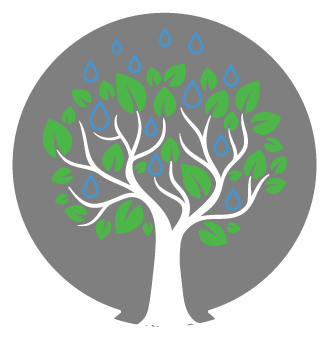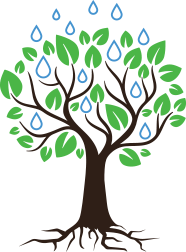- About This Project
- Tree Canopy BMPs
- Model Regulation
-
Hobby Farm BMPs
- Section 1. Introduction To Hobby Farming & Water Quality
- Section 2. Getting Started: Understanding Your Hobby Farm Site
- Section 3. Creating a Stormwater Management Plan For Your Hobby Farm
- Section 4. Nutrient Management For Water Quality
- Section 5. Animal Management For Water Quality
- Section 6. Stormwater Runoff Site Management
- Section 7. Hobby Farm Management & Safety
- Hobby Farm Guidance Survey
- Project Resources
- Contact Us
Trees distributed throughout our community landscapes provide many benefits beyond the inherent beauty they bring to streets and properties. Through a number of research and tree census projects, the USDA Forest Service's Center for Urban Forest Research (CUFR) has explored and documented the ecological services provided by trees in the urban landscape. The CUFR has investigated these ecological benefits both for specific case studies in individual communities (e.g., P.J. Peper, et. al., 2007, New York City, New York Municipal Forest Resource Analysis) and through the general development of data to support its suite of "i-Tree Tools" (http://itreetools.org/). The ecological benefits of mature canopy trees include substantial energy savings, carbon sequestration, air pollutants removal, rainfall interception (and the consequent reduction in stormwater runoff), and property value increases.
One of the most overlooked and under-appreciated benefits of mature trees, is their ability to reduce the volume of water generated in the urban landscape during and following a storm event. To illustrate this potential stormwater benefit of a canopy tree, using the National Tree Benefit Calculator,[1] a 12-inch red maple in the northeastern United States will intercept about 1353 gallons of water per year. With an estimated tree crown spread of about 27 feet in diameter,[2] this results in an annual reduction in runoff depth of 3.8 inches over the area of the tree's canopy. Based on the rainfall record underlying this estimate (41 inches), this amount exceeds a 9% reduction in annual rainfall reaching the ground beneath the tree. Where such a tree is proximate to a paved surface, this represents a significant reduction in runoff from that surface.
Current federal and state stormwater management regulations require collection and treatment of runoff from paved surfaces; therefore, a program to preserve, replace, and augment mature trees in the urban landscape could not only retain other environmental benefits, but could also reduce the volume of runoff requiring treatment. This would contribute to substantial savings if accounted for in the sizing and operation of stormwater treatment facilities to comply with these programs.
This project characterizes how the preservation and planting of canopy trees would enhance the management of stormwater within existing urban landscapes and in new-development/redevelopment projects, and explores ways to integrate tree canopy maximization into stormwater management permitting, design, and implementation.
[1] This tool was developed by Davey Tree Expert Co and Casey Trees, based on the CUFR's i-Tree Tools, accessed at the Arbor Day Foundation's web-site: https://www.arborday.org/calculator/index.cfm. This particular calculator uses modeling based on weather data from JFK International Airport, New York City, NY to represent data for the Northeastern U.S. It is also based on a one-year rainfall record (2000) of 41 inches. An evaluation of tree cover using an alternative modeling tool is discussed later in this chapter, which uses more site specific rainfall data and better characterizes annual stormwater benefits.
[2] Estimated from data included in L.E. Frelich, 1992, Predicting Dimensional Relationships for Twin Cities Shade Trees



